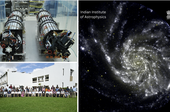 SCOPE SCOPE
SCOPE SCOPEIIA Celebrates 10 Years of Operation of the UltraViolet Imaging Telescope on board AstroSat
UIVT is the primary payload on board AstroSat, India’s first dedicated space observatory, launched on September, 28, 2015 by ISRO. AstroSat carries five payloads capable of observing simultaneously from the ultraviolet to soft X-rays and hard X-rays. UIVT was designed, assembled, tested, and delivered by IIA, from its campus in Hosakote. To commemorate this achievement and to plan for future space UV telescopes, IIA organised a one-day academic workshop on 4 December 2025, to mark 10 years since the opening of the doors of UVIT on 30 November 2015.
The UVIT image gallery can be seen here.
The DST press release is here.
The PIB press release is here.
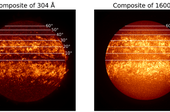 SCOPE SCOPE
SCOPE SCOPEKodaikanal Solar Observatory data helps tracing solar magnetic activity influencing satellite communication
A study led by astronomers at the Indian Institute of Astrophysics traced the variation of the Sun's magnetic activity with latitude of almost eleven years using a new technique. This was done using calcium K line spectroscopic data from the Kodaikanal Solar Observatory which recently celebrated its 125th anniversary.
This study was published in The Monthly Notices of the Royal Astronomical Society as a paper titled "Variations of the Ca II K line profile parameters with solar latitude and time observed from Kodaikanal Solar Observatory", by Apoorva Srinivasa, Anu Sreedevi, K P Raju, K Nagaraju, Jagdev Singh, Narayanankutty Karuppath, P Devendran, T Ramesh Kumar, P Kumaravel.
The paper can be downloaded from here.
The PIB press release is here.
The DST press release is here.
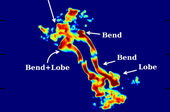 SCOPE SCOPE
SCOPE SCOPESimulations decode rare twin radio galaxies twisting in space
Twin radio galaxies (TRGs) are extremely rare objects, with only three known so far. A team led by astronomers at the Indian Institute of Astrophysics has succeeded in reproducing the complex morphology of the most recently discovered TRG through 3-D hydrodynamical simulations, proving the crucial role played by the precession of the twin plasma jets emanating from the two supermassive black holes in this system.
This study was published in The Astrophysical Journal in a paper titled "Low-velocity Precessing Jets Can Explain Observed Morphologies in the Twin Radio Galaxy TRG J104454+354055", by Santanu Mondal, Gourab Giri, Ravi Joshi, Paul J. Wiita, Gopal-Krishna, and Luis C. Ho.
The paper can be downloaded from here.
A video simulation of the evolution of jets with time is here.
The PIB press release is here.
The DST press release is here.
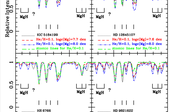 SCOPE SCOPE
SCOPE SCOPEAstronomers unearth unexpected chemical link during stellar evolution
A new study has traced a link between Lithium-rich red giant stars and their enhanced Helium abundance, using data from the Himalayan Chandra Telescope and other archival data. The study gives a new lead to the evolution of cool giant stars along the red giant phase.
This study was published in The Astrophysics Journal as a paper titled "Photospheric Helium Abundance in Cool Giants: A Comprehensive Study", by B. P. Hema and Gajendra Pandey of IIA.
The PIB press release is here.
The DST press release is here.
The paper can be accessed here.
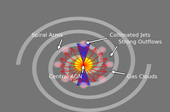 SCOPE SCOPE
SCOPE SCOPEBlack holes and cosmic jets join forces to shape galaxies
Black hole activities suppress the birth of new stars around it, shows a new study that can help in a deeper understanding of how galaxies evolve and may provide answers to why some have very low star-formation rates.
This study was published in the Astrophysical Journal, titled “Warm Ionized Gas Outflows in Active Galactic Nuclei: What Causes Them?”, and is authored by Payel Nandi and C.S. Stalin from IIA and D.J. Saikia from IUCAA.
The PIB press release is here.
The DST press release is here.
The paper can be downloaded from here.
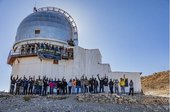 SCOPE SCOPE
SCOPE SCOPEHanle Dark Sky Reserve star party brings together astronomy enthusiasts for the third year
Astronomy enthusiasts from across the country participated in amateur astronomy and astrophotography related activities at the third edition of the HDSR Star Party that was jointly organised by the Indian Institute of Astrophysics (IIA), Department of Wildlife Protection of UT Ladakh, and Bhabha Atomic Research Centre (BARC) between 18 and 23 September.
The PIB press release is here.
The DST press release is here.
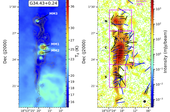 SCOPE SCOPE
SCOPE SCOPEAstronomers unveil observational evidence of how cosmic dust grains line up with the Galaxy’s magnetic field
Scientists have long believed that just like dust particles dancing in a ray of light, tiny cosmic particles floating between stars in the Milky Way act as storytellers of the universe. Now a team of astronomers, has just uncovered the strongest observational evidence yet of how these interstellar dust grains align themselves with magnetic fields in our Galaxy.
This is based on the paper titled "B-fields and Dust in Interstellar Filaments Using Dust Polarization (BALLAD-POL). III. Grain Alignment and Disruption Mechanisms in G34.43+0.24 Using Polarization Observations from JCMT/POL-2", by Saikhom Pravash, Archana Soam, Pham Ngoc Diep, Thiem Hoang, Nguyen Bich Ngoc, and Le Ngoc Tram, The Astrophysical Journal, 2025, 981, 128.
Press release by DST published here.
Press release by PIB published here.
Download the paper here.
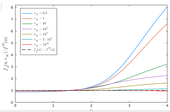 SCOPE SCOPE
SCOPE SCOPEA new window into the stars by modeling stellar atmosphere
In a major advance in computational astrophysics, IIA astronomers and collaborators have developed a method to compute more realistic properties of stellar atmospheres. The method opens the door to more realistic simulations of stellar spectra — the primary tool astronomers use to decode the physical conditions in stars, circumstellar disks, and interstellar clouds.
This is based on the paper titled "Full non-LTE multi-level radiative transfer: I. An atom with three bound infinitely sharp levels", by Lagache T., Paletou, F., and Sampoorna, M., Astronomy and Astrophysics, 2025, 699, A198.
Press release by DST published here.
Press release by PIB published here.
Download the paper here.
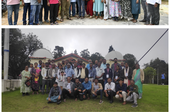 SCOPE SCOPE
SCOPE SCOPEIndian Institute of Astrophysics Training Workshop at Kodaikanal and Kavalur for Total Lunar Eclipse
A total lunar eclipse is to occur on the night of 7-8 September 2025, which will be visible from all over India. IIA therefore organised two “Train the Trainers” Workshops during 2-3 August 2025, one at the Vainu Bappu Observatory in Kavalur, and the other at the Kodaikanal Solar Observatory in Kodaikanal. These workshops were to train science and astronomy communicators and teachers in Tamil Nadu and Puducherry so that they can in turn organise preparatory workshops and eclipse viewing camps in their neighbourhoods.
Link to PIB article here.
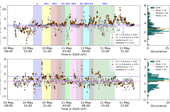 SCOPE SCOPE
SCOPE SCOPESolar blasts that lit up Ladakh Skies May last year uncoded
A new study by IIA astronomers has revealed crucial insights into how multiple successive solar blasts known as Coronal Mass Ejections (CMEs) have interacted with each other and evolved thermally en route from the Sun to Earth. This occurrence triggered the most intense space weather event in the last two decades, which was observed on 10th May 2024. These findings offer a major step forward for improving space weather forecasting models, particularly in predicting the impact of complex CME events on Earth's magnetosphere.
This is based on the paper titled "Evolution of the interacting coronal mass ejections that drove the great geomagnetic storm of 10 May 2024", by Soumyaranjan Khuntia, Wageesh Mishra, and Anjali Agarwal, 2025, Astronomy and Astrophysics, 698, A79.
Press release by PIB published here.
Press release issued by DST here.
Download the paper from here.